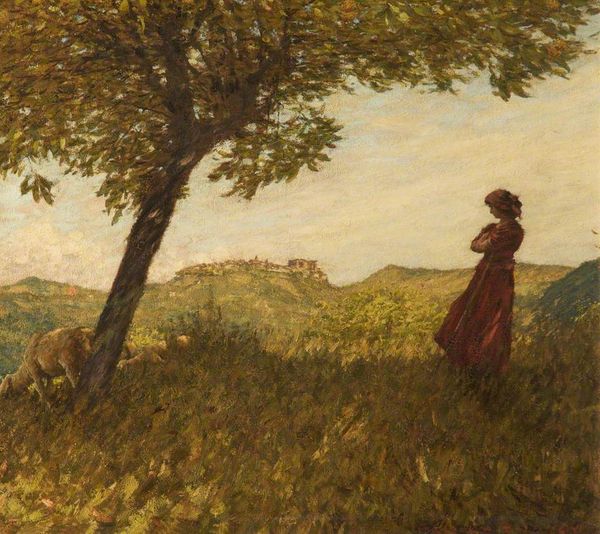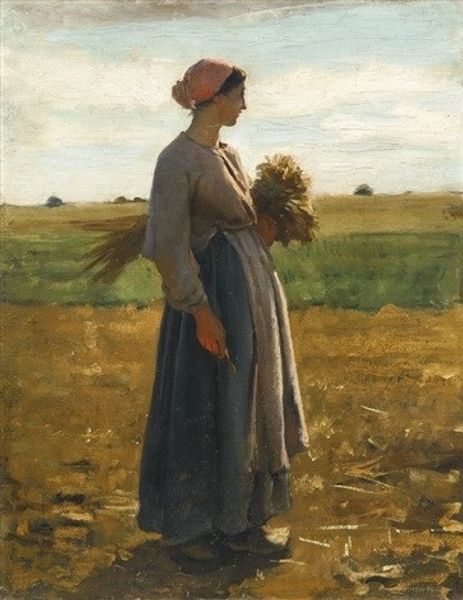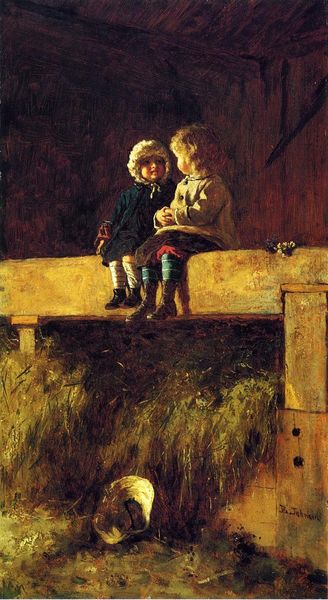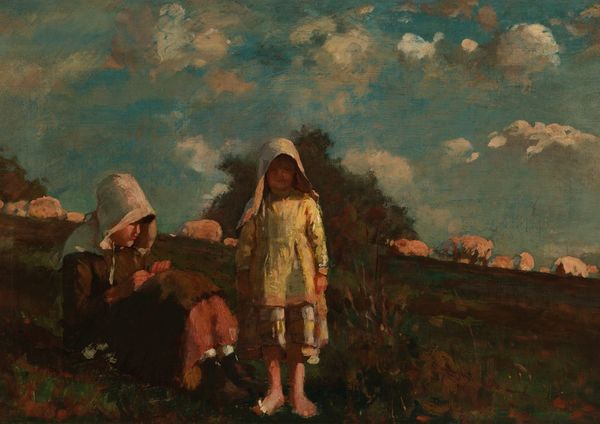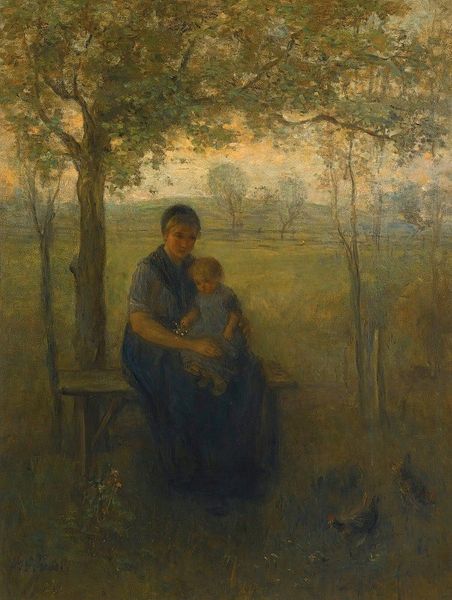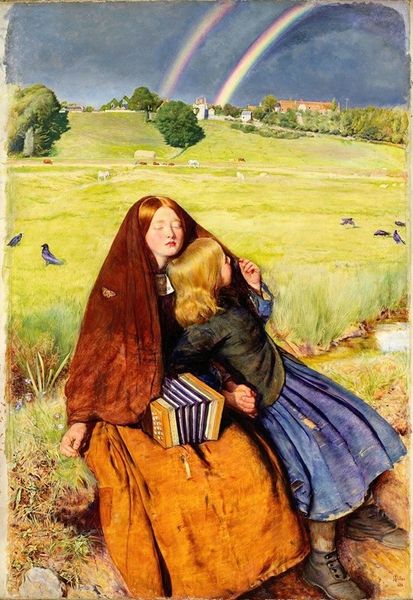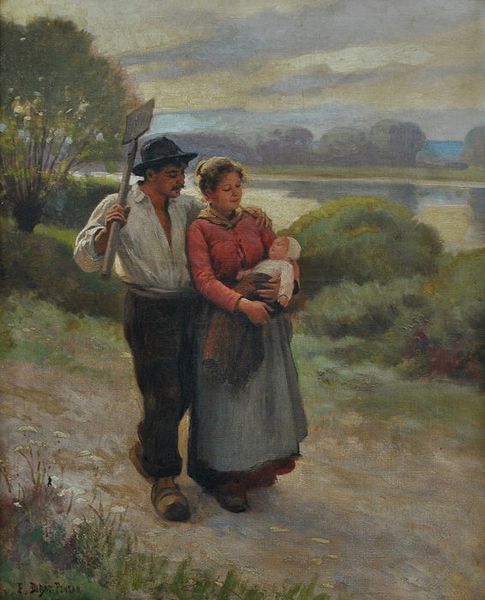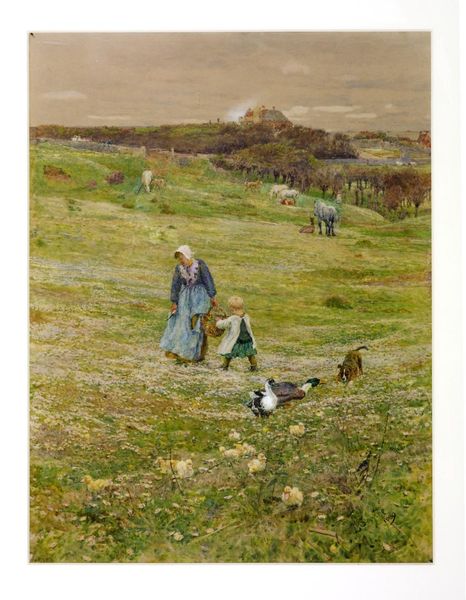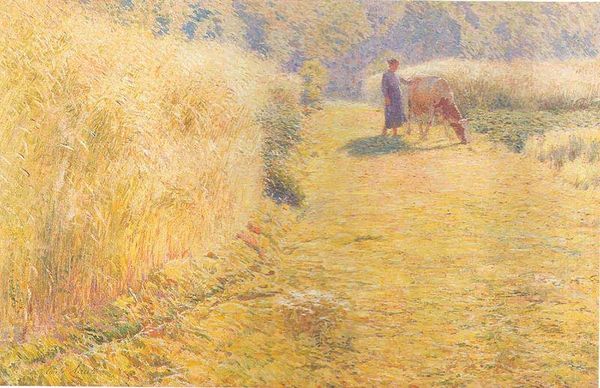
painting, oil-paint
#
portrait
#
impressionist
#
mother
#
painting
#
impressionism
#
oil-paint
#
landscape
#
impressionist landscape
#
figuration
#
nature
#
oil painting
#
child
#
animal portrait
#
genre-painting
#
italy
Copyright: Public domain
Editor: Here we have Niccolo Cannicci’s oil painting, "In Sight of San Gimignano", painted in 1881. I find the depiction of the mother and child rather muted and pensive, considering the natural beauty around them. How do you interpret this work? Curator: It’s interesting you pick up on that subdued mood. This piece offers a glimpse into the complex intersection of gender, labor, and the Italian landscape. The figures are deliberately placed with their backs to us. What does that tell us about their representation in the context of 19th-century Italian society? Editor: Perhaps they’re meant to represent a universal experience, rather than individual portraits? The back view allows the viewer to project onto them. Curator: Exactly. Consider the historical backdrop. Post-Risorgimento Italy, while unified, was grappling with stark regional inequalities and persistent gender roles. Women in rural settings often bore the brunt of agricultural labor and childcare. How does Cannicci subtly acknowledge this reality through the figures' posture, clothing, and the overall composition? Are they romanticized or realistically portrayed? Editor: I see your point. They aren’t idealized figures; their clothing is practical, and their stance suggests weariness, not leisure. Curator: And notice the city of San Gimignano on the horizon. It is “in sight”, a beacon of history and culture, but seemingly distant. Does that distance symbolize a social divide or a longing for something more for these figures? Think about the conversations surrounding urbanization and rural-to-urban migration occurring at this time. Editor: That adds a whole new dimension. It's no longer just a charming scene but a commentary on the lived experiences of rural women and their limited opportunities. I hadn’t considered that! Curator: Precisely. Art can be a powerful tool to explore the intersectional issues faced by individuals and communities throughout history. Editor: Thank you, I'll never see impressionist landscapes the same way again!
Comments
No comments
Be the first to comment and join the conversation on the ultimate creative platform.
